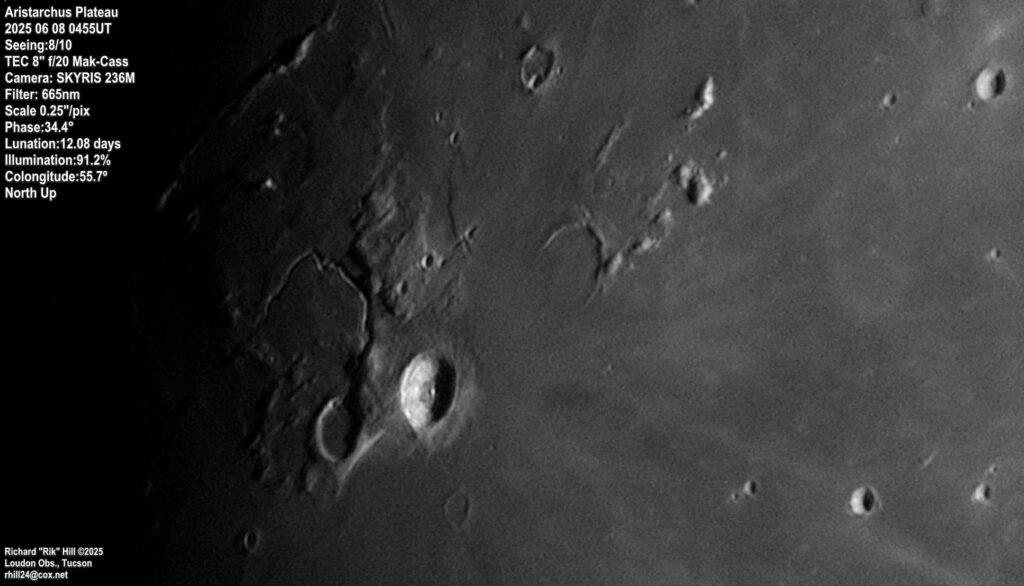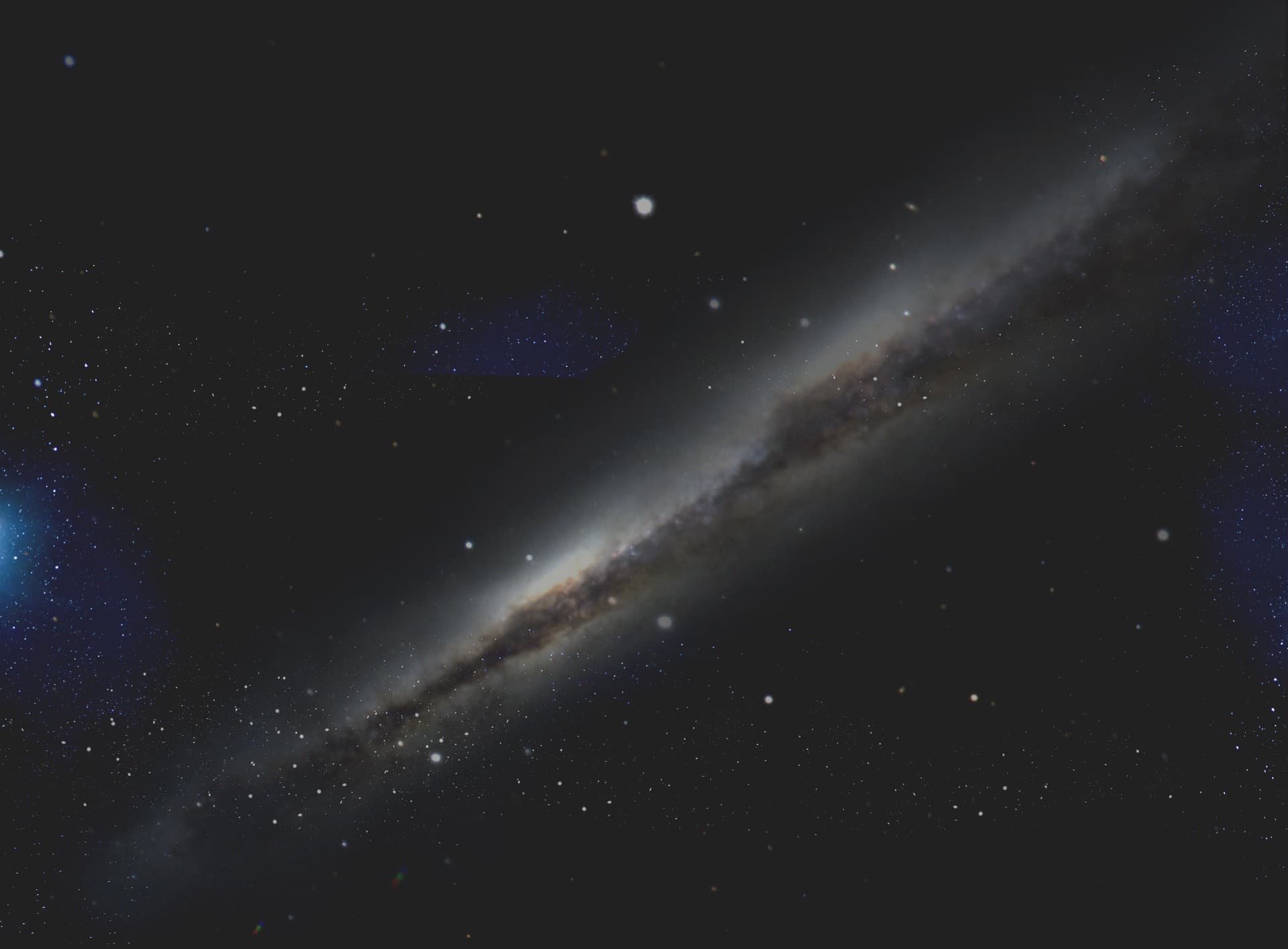When the moon is about 12 days past new a dramatic region can be found on the terminator just north of the equator emerging from its long night. It is a collection of features marked by the bright crater Aristarchus (41km diam.) with it’s strongly terraced walls crossed by radial bands stretching out from the center of the crater. In fact, this is considered the brightest large formation on the Moon. The tiny central peak, see as a bright dot in this image, only 300m tall, which is rather small. To the northeast is the slightly larger and half flooded crater Prinz (49km) with Montes Harbinger behind it. To the left of these montes, and a little farther north is the crater Krieger (32km) near the top of this image, with the little crater Van Bisbroeck on its southern interior wall.
Due north of Aristarchus are two small craters Aristarchus Z (7km) on the left and Vaisala (8km) on the right. Just south of Vaisala is a small unnamed shallow crater of about 6km diameter. It has a short rima that extends farther to the upper right (northeast) and connects with another crater, Aristarchus B (7km). Just before connecting with the crater it appears to form an “X” with another elongated depression to the south and a short wrinkle ridge to the north, Rupes Toscanelli. The depression appears to be the shallow elongated merge of two craters. It’s an interesting set of small features for a good night of steady seeing.
To the west of Aristarchus is a similar diameter but shallower crater Herodotus (36km) it has an interesting southeastern wall that in this image looks like a running deer. But the most exciting feature is just north of this, Vallis Schroter the jagged upside down “U” shaped feature. It has a rill that runs most of its length. I have imaged portions of this under higher sun but not, of course, when it’s full of shadow.
The next good opportunity to see this collection of lunar wonders will be on Sept. 3 and 4 which will also be a favorable libration for this region on the Moon.

